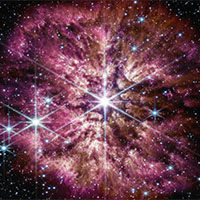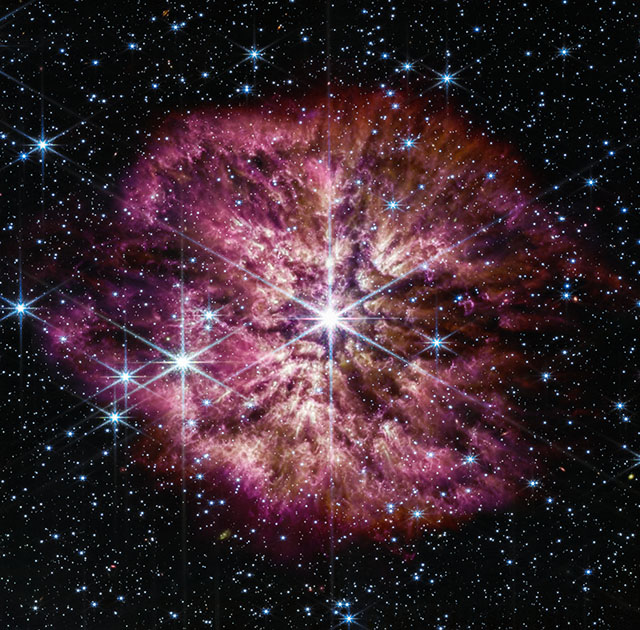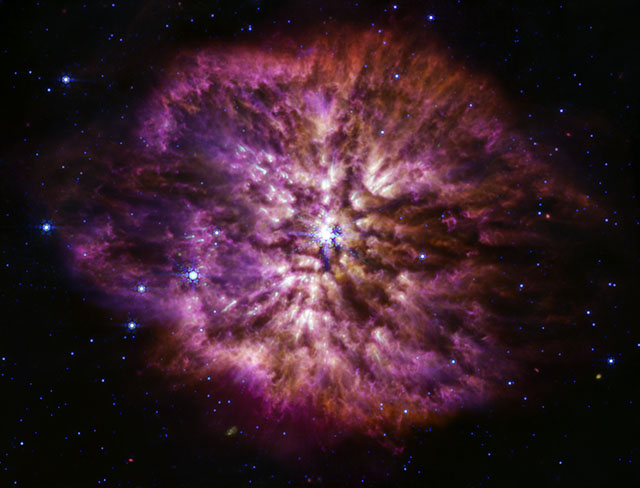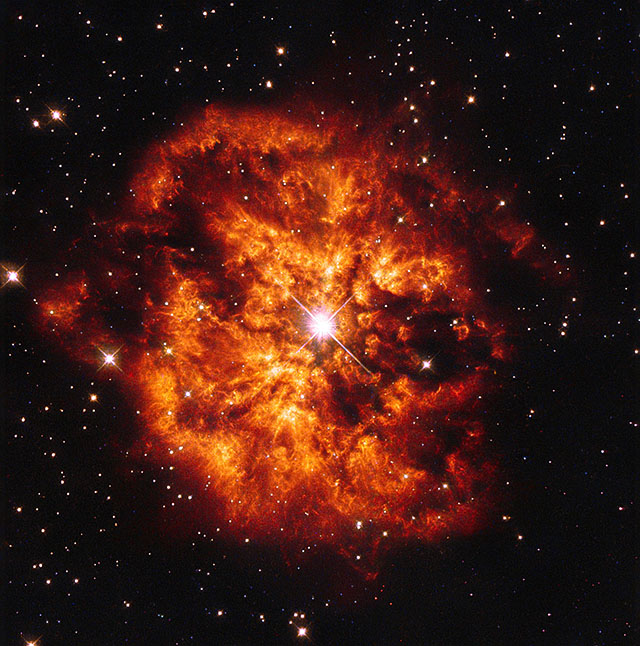Webb captures stunning images of the brief, rare, and spectacular Wolf-Rayet phase of a massive star
posted Thursday, March 16, 2023 at 10:30 AM EDT

The James Webb Space Telescope observed a rare Wolf-Rayet star last June, although NASA announced it this week. The star, WR 124, is showcased in unprecedented detail thanks to Webb's sophisticated imaging instruments.
WR 124 is about 15,000 light-years away in the constellation Sagittarius. WR 124 is massive – about 30 times more massive than the Sun. Wolf-Rayet, or WR, stars are rare heterogeneous sets of stars. Massive stars like WR 124 "race through their lifecycles," and some, like WR 124, go through a brief Wolf-Rayet phase before they go supernova.

Credits: NASA, ESA, CSA, STScI, Webb ERO Production Team
During the Wolf-Rayet phase, stars "cash off their outer layers," resulting in their iconic halos of gas and dust. Not only is WR 124 about 30 times the mass of the Sun, but it has also shed 10 Suns' worth of material so far during its Wolf-Rayet phase.
As the gas shed by a Wolf-Rayet star moves away from the star, it cools down, and cosmic dust forms. The origin of such cosmic dust, critical to the universe's development, is of particular interest to astronomers. Cosmic dust performs many functions, including facilitating star formation, creating new planets, and acting as the building blocks for life. Even though dust is essential, and it's been extensively studied, scientists still can't quite explain the surplus of dust in the universe.

Credits: NASA, ESA, CSA, STScI, Webb ERO Production Team.
Webb may help further our understanding of the universe's "dust budget" thanks in large part to Webb's Near-Infrared Camera (NIRCam). This camera reveals WR 124 in unprecedented detail, allowing astronomers to better study cosmic dust and apply real data to investigations.
Hubble has captured images of WR 124 before in visible light wavelengths. While this spectrum is important for study, Webb's expanded spectrum only furthers the ability of scientists to study WR 124.

Image credit: ESA/Hubble & NASA, Acknowledgement: Judy Schmidt